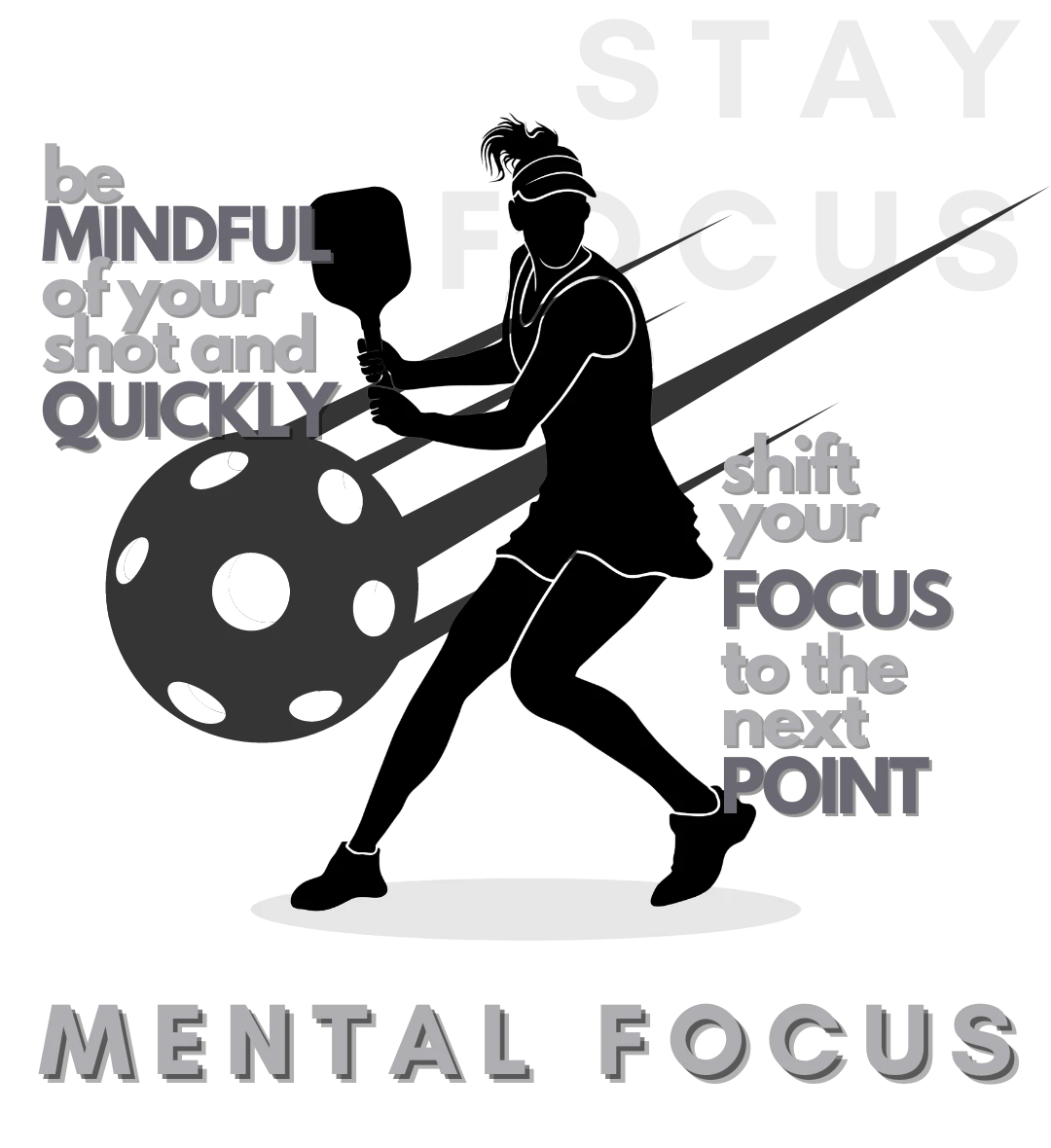
Pickleball Techniques and Strategies: from Beginner to Champion
From Beginner to Pro: Ace your Play with our Pickleball Techniques & Strategies to Dominate the Court in your Next Game.
 Hello, Pickleballers! Welcome to our little corner of the internet where we’re all about Pickleball rallies! Whether you’re a part of the active Pickleball community or just curious about this fast-paced sport, you’re in for a treat.
Hello, Pickleballers! Welcome to our little corner of the internet where we’re all about Pickleball rallies! Whether you’re a part of the active Pickleball community or just curious about this fast-paced sport, you’re in for a treat.
In this blog, we’re going to break down the exciting world of Pickleball rallies. Whether you’re a pro looking to up your game, a newbie wanting to learn, or simply a fan soaking up the energy, you’ll find valuable insights. Additionally, we’ll provide tips and strategies to enhance your understanding and enjoyment of the sport.
Whether you’re a player who loves competition, enjoys excitement, or is simply curious about a new sport, we invite you to join us. Let’s celebrate the fantastic plays in Pickleball while maintaining a strong community, staying injury-free, and using top-quality equipment. Greatness indeed emerges from every Pickleball rally– and we’re here to demonstrate just that.
A Pickleball rally refers to the back-and-forth exchange of shots between players during the game. If you’ve ever stood by the court during a Pickleball match, you know that the rallies significantly drive the game. The unique sound of the paddle meeting the ball, coupled with the rapid footwork, and the noticeable excitement make an experience that both players and onlookers truly feel.
During Pickleball rallies, players on different sides use paddles to hit a plastic ball. Players also execute serves, volleys, groundstrokes, and smashes. The goal is to keep the ball in play and position themselves for points. This makes it tough for the opponent to hit back. Rallies are quick and need a fast reaction.
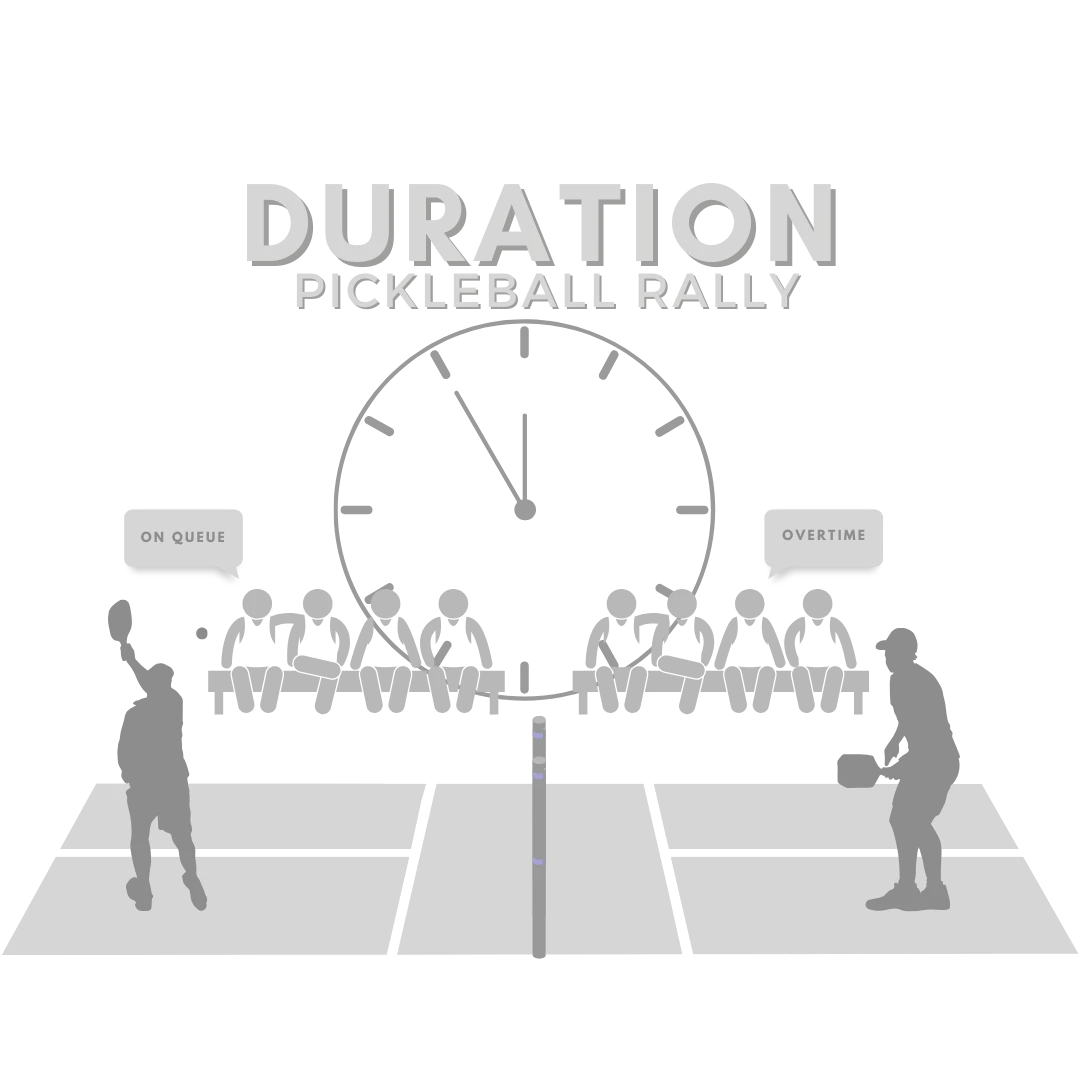 Unlike some other sports where a point can be scored in a matter of seconds, Pickleball rallies often stretch out into longer exchanges. The duration of Pickleball rallies can vary widely depending on various factors. Typically, Some rallies are brief due to aggressive play and rapid winning shots. Typically, Pickleball rallies can last anywhere from a few seconds to more than a minute.
Unlike some other sports where a point can be scored in a matter of seconds, Pickleball rallies often stretch out into longer exchanges. The duration of Pickleball rallies can vary widely depending on various factors. Typically, Some rallies are brief due to aggressive play and rapid winning shots. Typically, Pickleball rallies can last anywhere from a few seconds to more than a minute.
However, for players at a higher skill level, rallies tend to be shorter due to more aggressive play and skilled shot placement that can quickly endpoints. Skilled players try to take control of the point early in the rally by using smart shots, quick volleys, and good net play. Rallies tend to be longer for beginners or those players who are just playing for some fun. This happens because their shots aren’t aggressive, so they have longer back-and-forths before someone scores a point.
On the other hand, some rallies can extend playtime as players engage in thoughtful tactics and defensive moves. Points are gained when one side fails to adhere to the rules, such as hitting the ball out of bounds or into the net. In order to achieve extended and successful rallies, it’s equally important to maintain control and adapt to your opponent’s shots.
According to the Guinness Book of World Records the Rossetti brothers from the USA set a new record for the longest Pickleball rally by achieving 16,046 strokes. This feat took place in Rocky Hill, Connecticut, USA, on October 10, 2021.
In Pickleball, faults are violations of the rules that result in the loss of a rally or point. However, it’s important to note that rules may vary slightly based on different Pickleball organizations or events. Here are some common Pickleball faults that players should be aware of as outlined in the USA Pickleball Rulebook. Any fault listed in the Rulebook will bring the rally to an end. 
1. A fault by the receiving team, on the other hand, leads to a point for the serving team.
2. If the serving team makes a fault, the server faces either a loss of serve or a side out.
3. A fault occurs when a serve doesn’t land inside the receiving court.
4. It’s a fault when the ball is hit into the net during the serve or any return.
5. Another fault occurs when the ball is volleyed before bouncing on each side.
6. A fault happens when the ball goes out of bounds.
7. Likewise, a fault occurs when players hit the ball from the Non-Volley Zone
8. A fault occurs when the receiver doesn’t hit a ball before it bounces twice.
9. On the other hand, it’s considered a fault if a player, their clothing, or any part of their paddle touches the net or net post while the ball is in play.
10. A fault happens when a service rule is broken.
11. Additionally, a fault occurs when a player or anything they’re wearing or carrying is hit by a ball in play.
12. Furthermore, a fault takes place when a ball in play hits a permanent object before bouncing on the court.
Pickleball rallies are all about smart moves, coordinated teamwork, and quick adjustments. To succeed in this sport, a well-rounded strategy coupled with court positioning and smart selection as well as having effective partner communication are equally important. 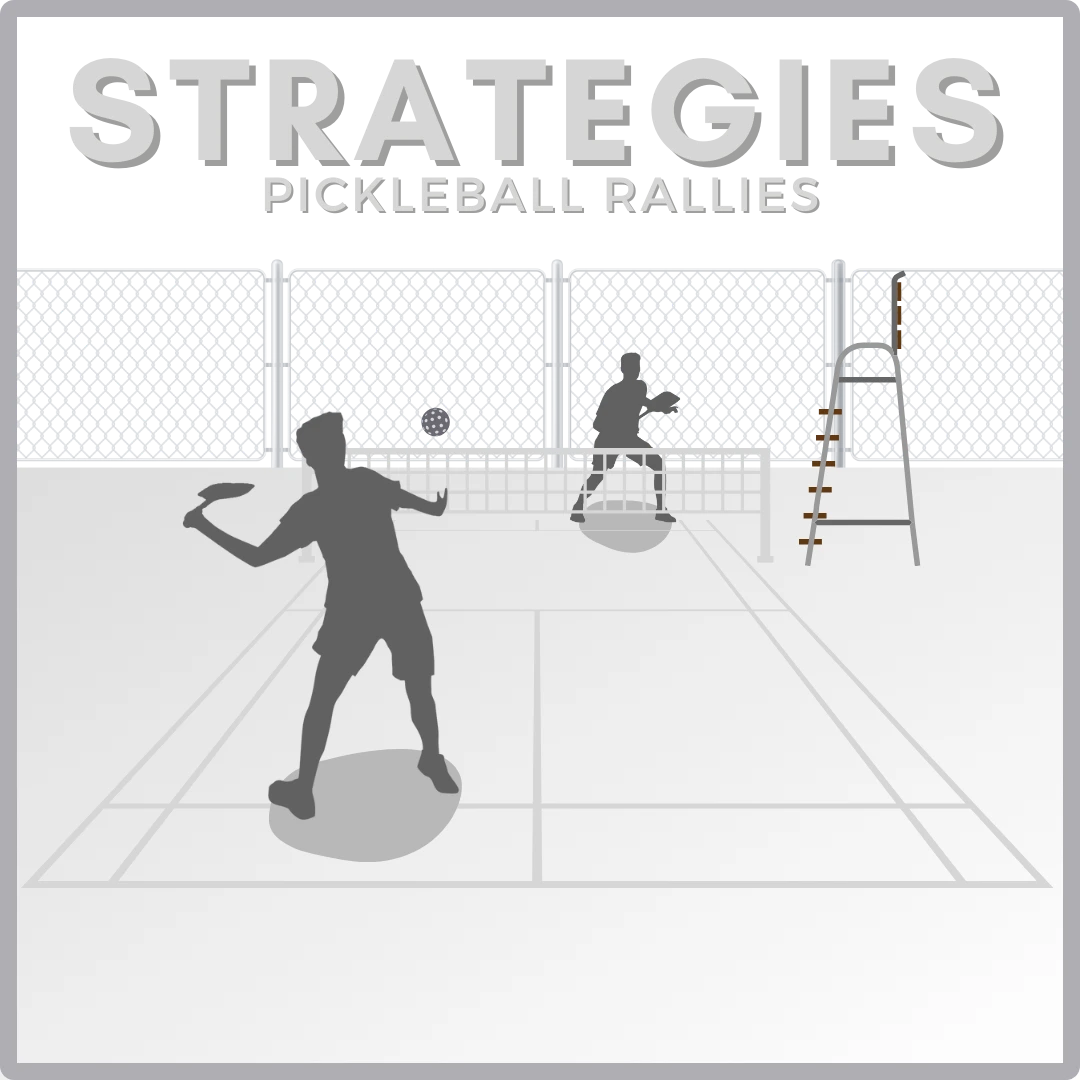
1. Firstly, your position in the court matters significantly. Position yourself just a bit behind the baseline, precisely in the middle. This approach allows you to cover both sides effectively. Team up with your partner diagonally, ensure that one handles the server’s side, whereas the other takes care of the rest.
2. When you serve and return, consistency is key. To begin, target deep serves that gracefully touch the baseline. This approach not only keeps your opponents alert but also restricts their opportunities to launch an attack. Now, for the returning part—go for controlled, low shots that effectively push them back. These shots serve the purpose of effectively pushing your opponents backward, therefore, giving you a strategic advantage.
3. The crucial move known as the “third shot drop” is an important move. After you receive the ball, gently lead it over the net, allowing it to barely touch the surface. Keep the bounce low, make your opponents defend, and give you the opportunity to move closer to the net.
4. Speaking of which, the net is where the action heats up. Step closer after that third shot and be smart. Furthermore, attack when you can, but keep it in control. Don’t go crazy; calculated aggression is your best play.
 During this exchange, trade those gentle shots over the net to maintain control. Aim specifically for the ball to go low and stay close to the net. In this scenario, patience is the name of the game.
During this exchange, trade those gentle shots over the net to maintain control. Aim specifically for the ball to go low and stay close to the net. In this scenario, patience is the name of the game.
6. When you see an opportunity, change gears. Identify weak spots and take an offensive stance. If your opponents execute a weak shot – that’s your cue to strike. Direct your aim toward areas they aren’t covering well to make that winning shot count.
7. Let’s talk about teamwork. Always maintain an open line of communication with your partner. This involves regularly calling shots and transitioning between sides seamlessly. Additionally, it’s crucial to assist each other. For instance, if your partner excels at the forehand have them cover that side of the court.
8. Stay calm and patient. Rather than quickly trying for a winning shot, wait patiently for the right chance. Your mental strength is as important as your physical skills.
Basically, to win in Pickleball rallies, you need a complete set of skills. You have to position yourself well on the court and work together smoothly. It’s a coordinated plan. Serve well, return strategically, do the third shot drop perfectly, control the net, and talk well with your partner. Be flexible, smart, and patient. With this full plan, you’re ready to show your expertise on Pickleball.
Rally scoring is where a point is awarded to one of the teams on every rally, regardless of which team served. Once a team wins a rally, they receive a point, and the game continues until it reaches a predetermined point threshold, often set at 21 points.
1. In rally scoring, teams typically play to either 15 or 21 points, as opposed to the usual 11 points in traditional games.
2. Every team has just one server per side, even in doubles matches. This minimizes potential confusion about the next server.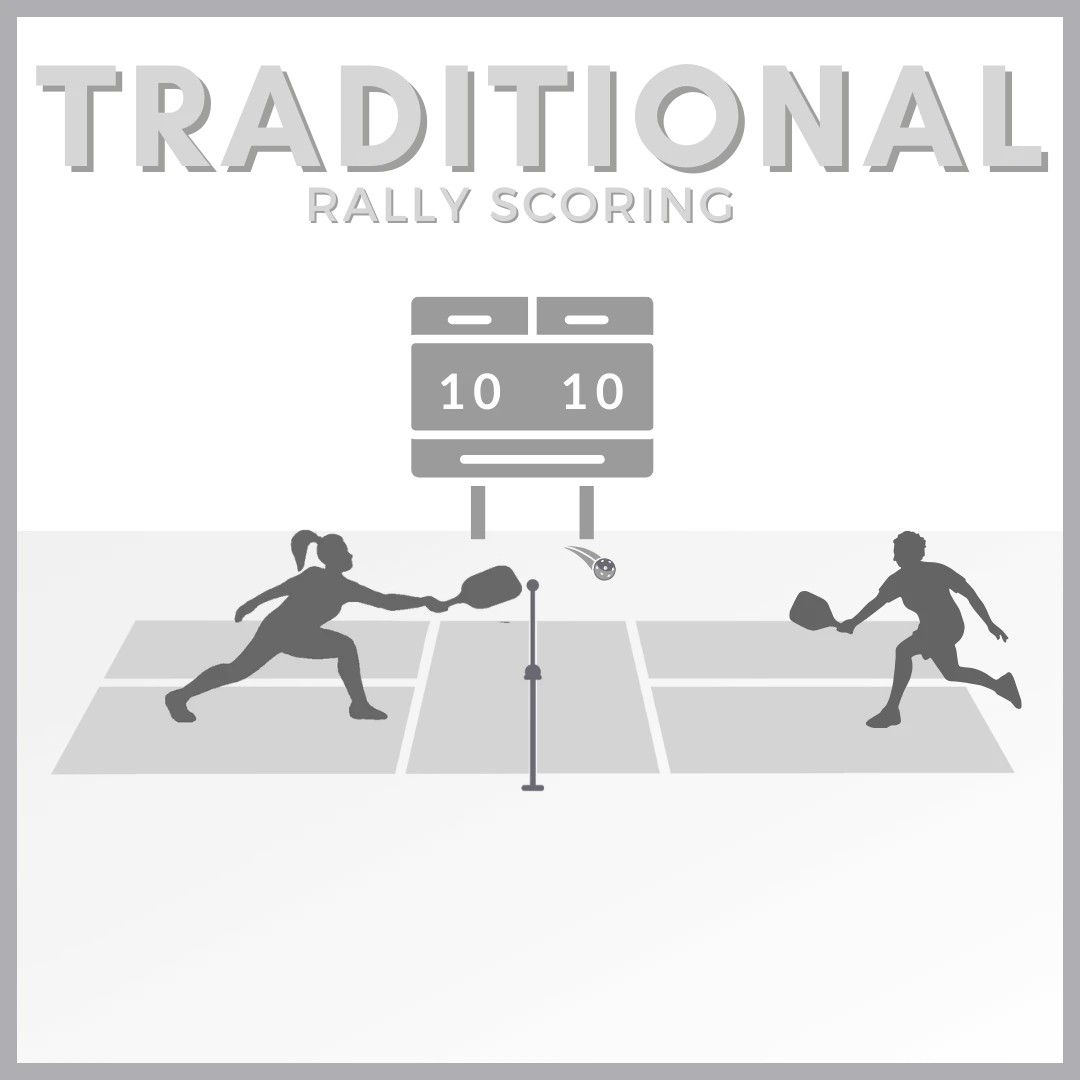
3. The team that’s serving keeps serving until they make a mistake. Then, the serve goes to the opposing team.
4. Additionally, both the serving and receiving teams can earn points while playing. Unlike traditional scoring, if the serving team makes a mistake, the receiving team gets a point.
Chapter VI – Rally Scoring Vs. Traditional Scoring
Rally scoring and Traditional Scoring represent two different scoring systems used in Pickleball. These systems determine how points are awarded during a game and can impact the pace and strategy of the game.
On the other hand, Rally Scoring is different. Any rally can result in a point, no matter which team is serving. The team that wins a rally gets a point, making the game move faster. In rally scoring, players need to be consistent and focused throughout the entire match because every point matters.
With traditional scoring, games usually go up to 11 points, requiring a 2-point lead if the score reaches 10-10. Traditional scoring allows for more strategic play, as a team can only earn points while serving.
Ultimately, rally scoring and traditional scoring affect how players approach the game. Therefore, the main distinction is when points can be earned: Only while serving in traditional scoring, but during any rally in rally scoring.
Pros of Rally Scoring
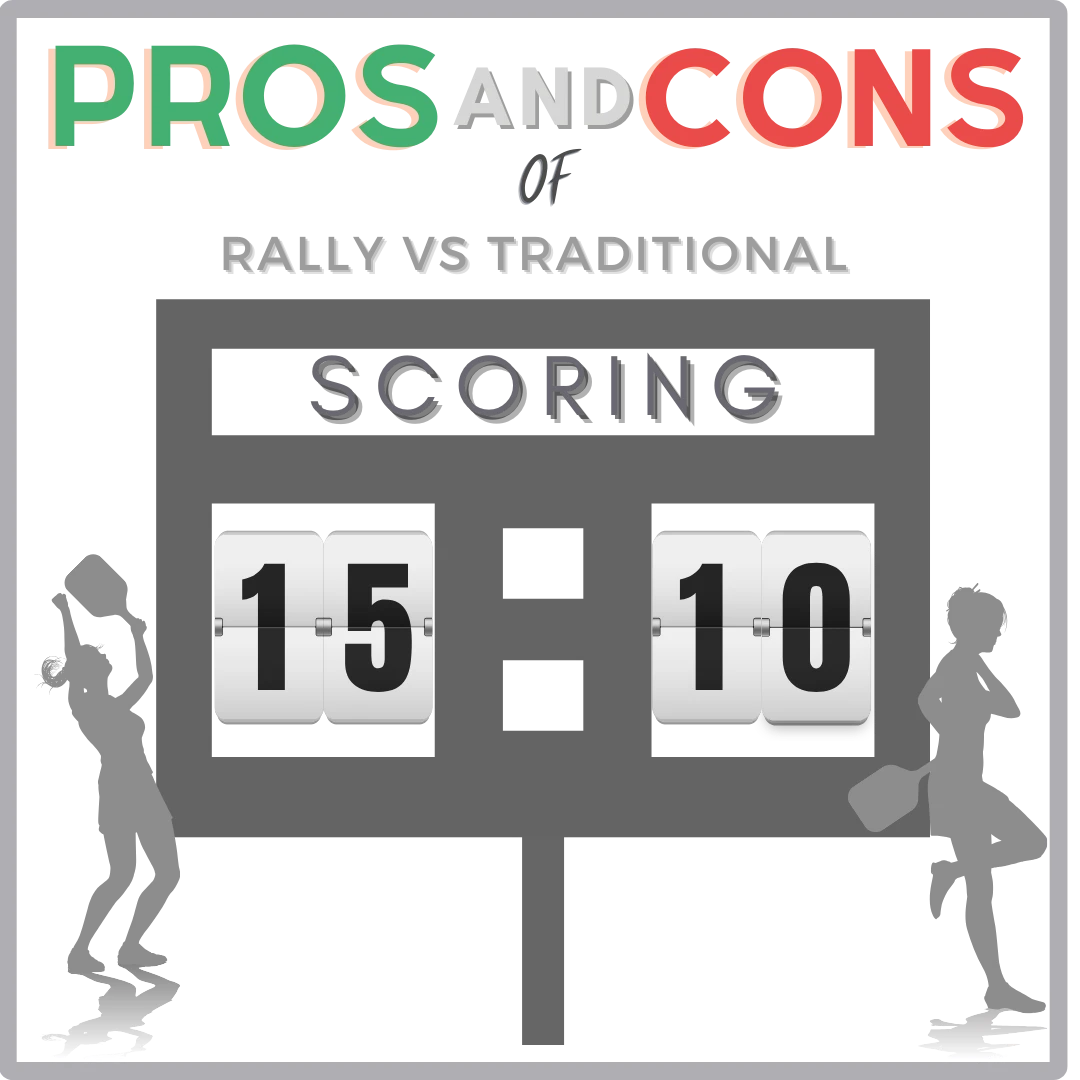 Each point matters, adding intensity and thrill to the game.
Each point matters, adding intensity and thrill to the game.
Cons of Rally Scoring
Pros of Traditional Scoring
Cons of Traditional Scoring
 In conclusion, Pickleball rallies electrify the game. They demand a fusion of technical finesse, strategic thinking, and mental resilience. As you refine your skills, keep in mind that it’s not just about striking the ball over the net but also about crafting opportunities and seizing them. Therefore, grab your pickleball paddle, step onto the court, and become a master of Pickleball rallies – one exchange at a time. Enjoy the game, embrace the challenges, and savor the moments that make Pickleball an undeniably addictive sport.
In conclusion, Pickleball rallies electrify the game. They demand a fusion of technical finesse, strategic thinking, and mental resilience. As you refine your skills, keep in mind that it’s not just about striking the ball over the net but also about crafting opportunities and seizing them. Therefore, grab your pickleball paddle, step onto the court, and become a master of Pickleball rallies – one exchange at a time. Enjoy the game, embrace the challenges, and savor the moments that make Pickleball an undeniably addictive sport.
Thank you again for tuning in today fellow Pickleballers! We’ll see you again in our next installment where we deep dive into other topics of this fantastic sport!

From Beginner to Pro: Ace your Play with our Pickleball Techniques & Strategies to Dominate the Court in your Next Game.

Step into the spotlight, make a lasting impression, and become a trendsetter on the Pickleball court with our Pickleball apparel guide.

Thinking about the perfect gift for someone just starting in Pickleball? Discover our Pickleball gift guide tailored for beginners. Look no further.

Ever wondered how your Pickleball style could reach new heights? Learn the secrets of success with the “Pickleball Accessories To Enhance Your Play and Ace Your Style”.
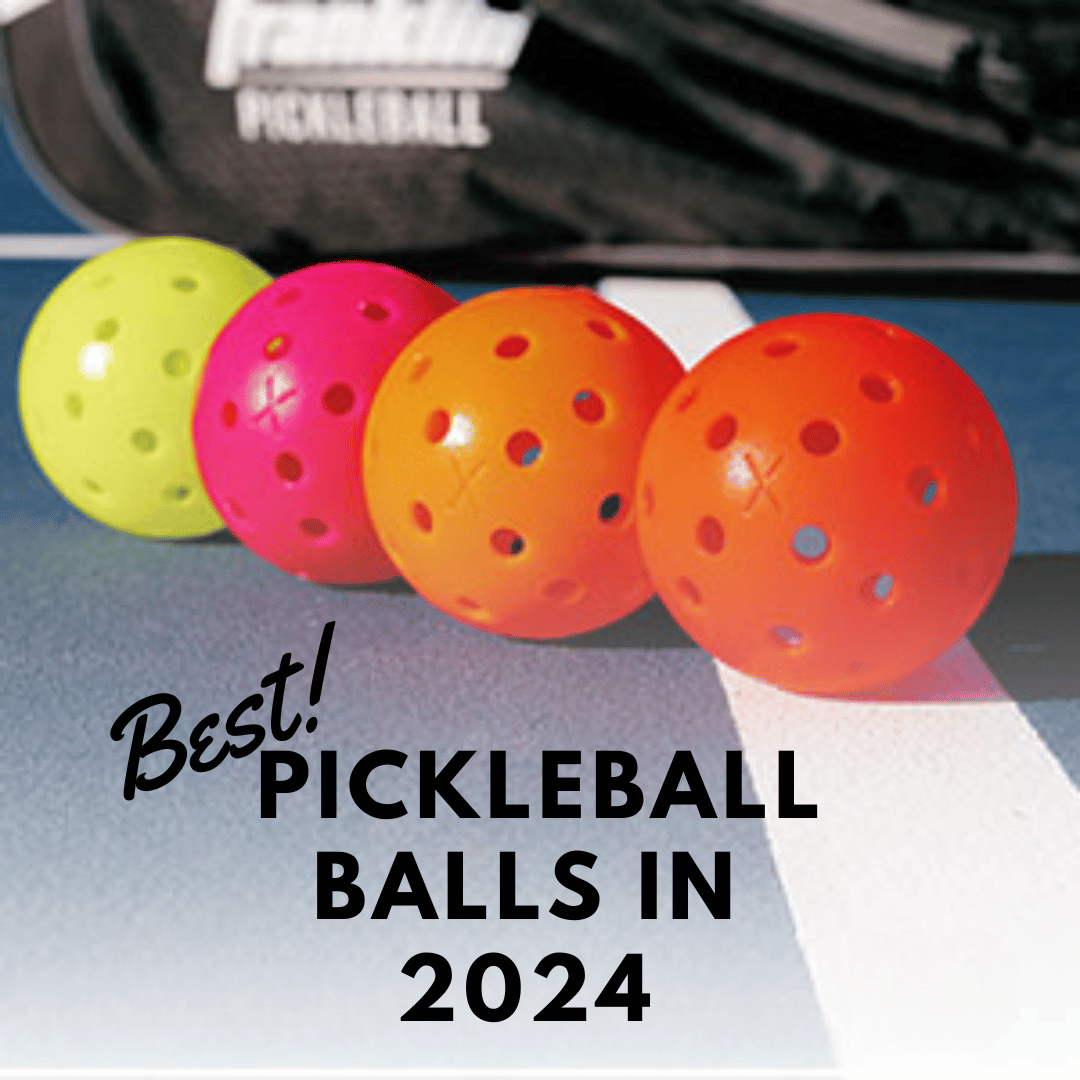
Are you seeking the perfect Pickleball balls for 2024? Let’s find out why they’re the “Best Pickleball balls for 2024”.
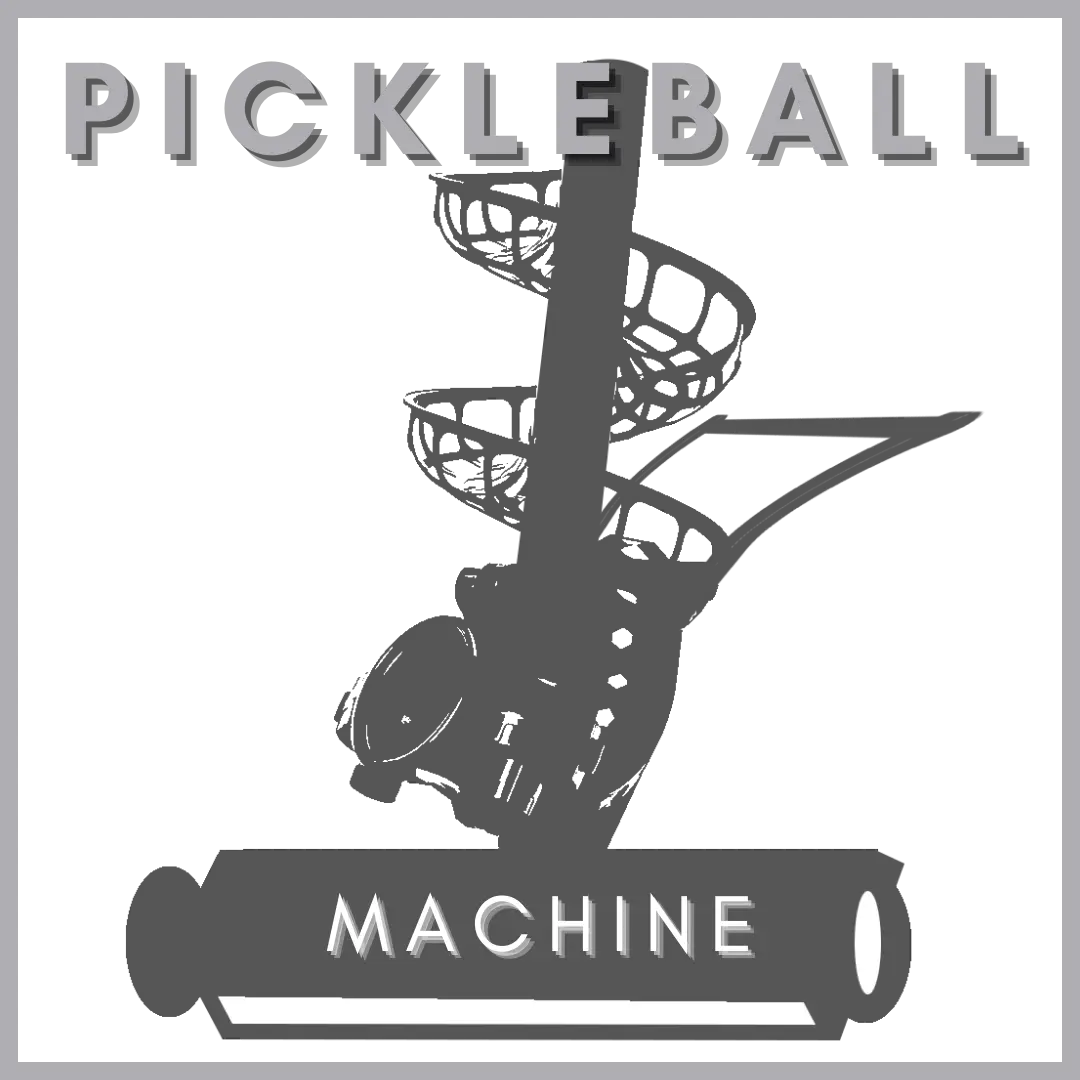
Looking to boost your pickleball skills? How can Pickleball Machines serve as your secret weapon?
If you would like us to feature your brand in our upcoming Pickleball blogs, Collaborate with Us. We’d love to have you featured.